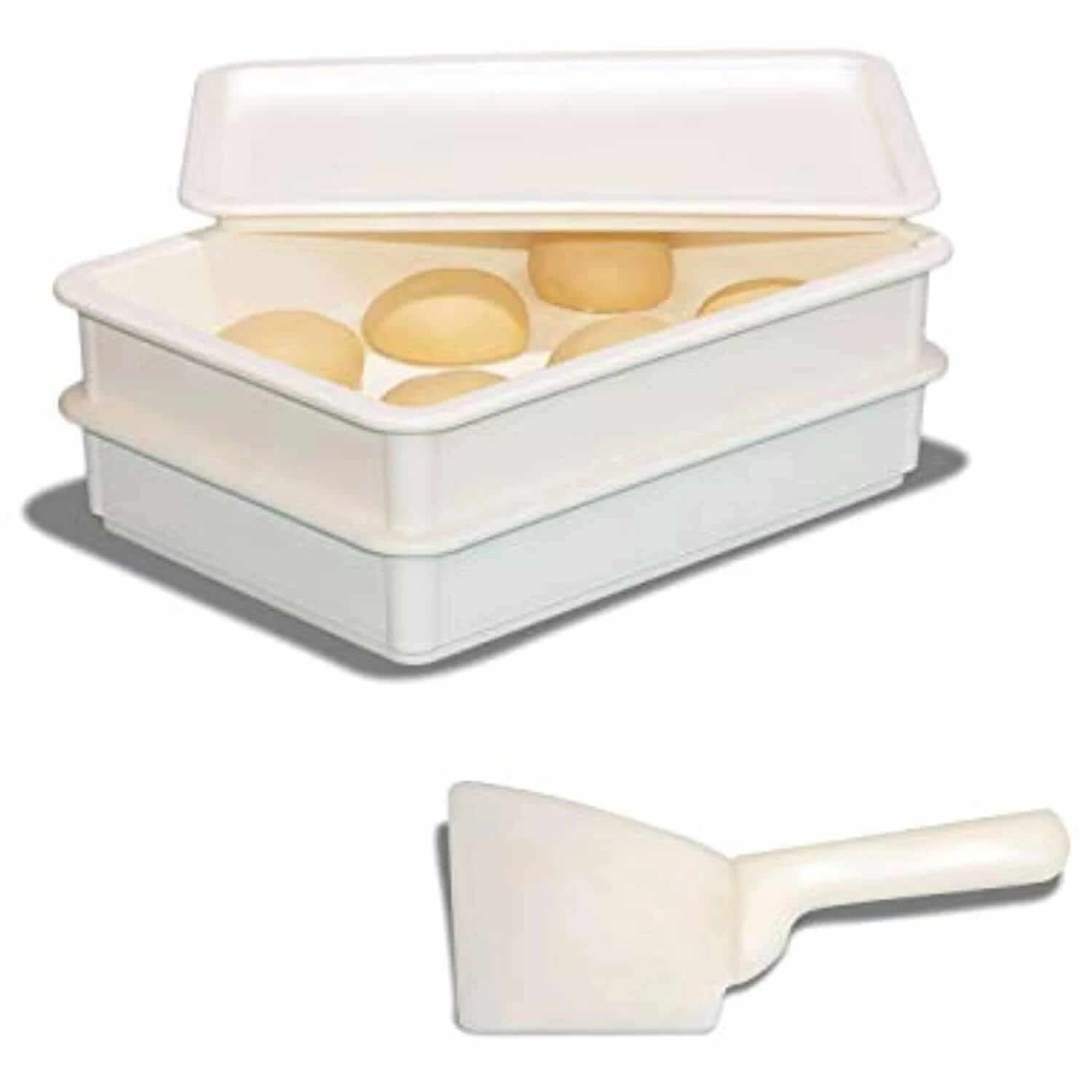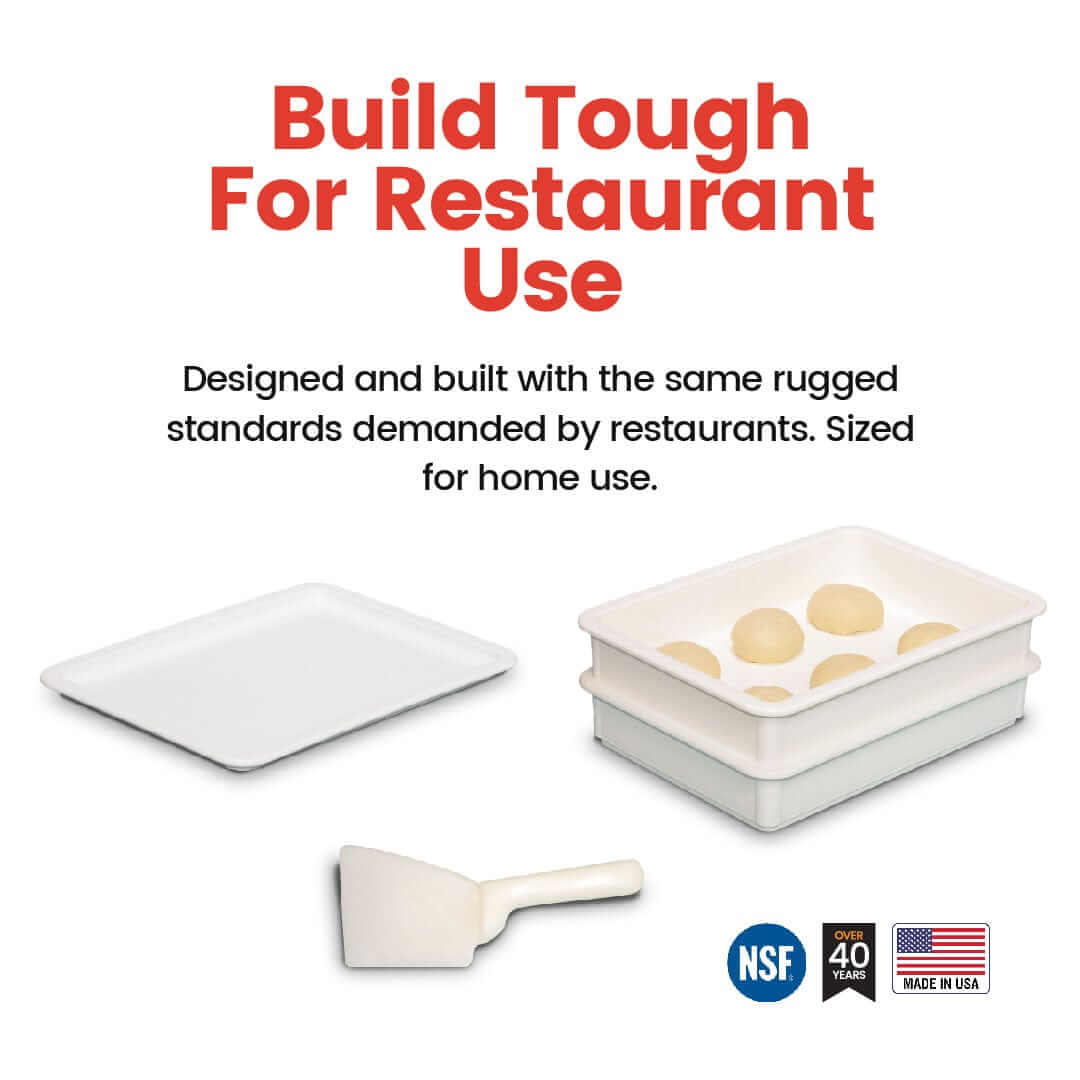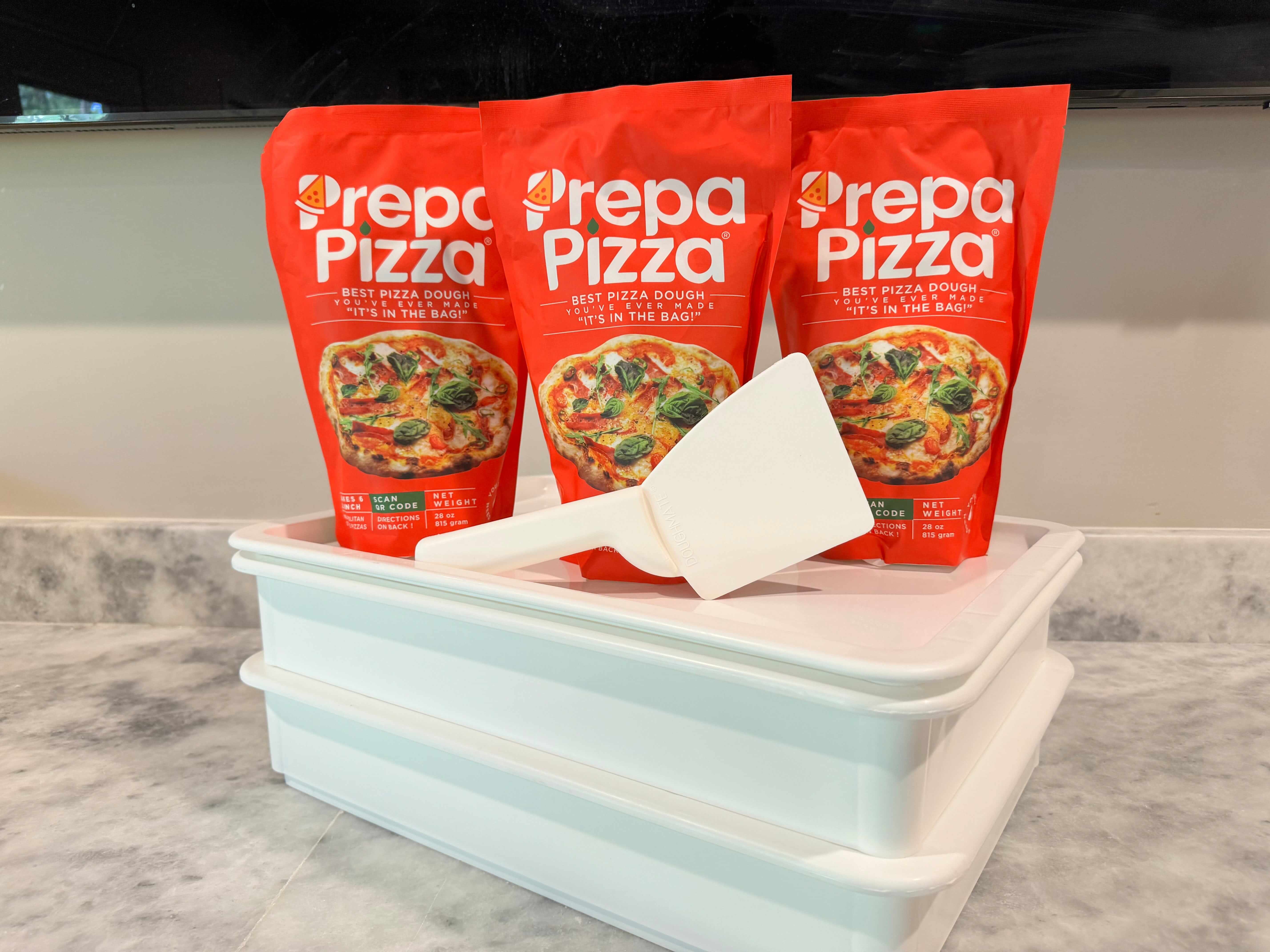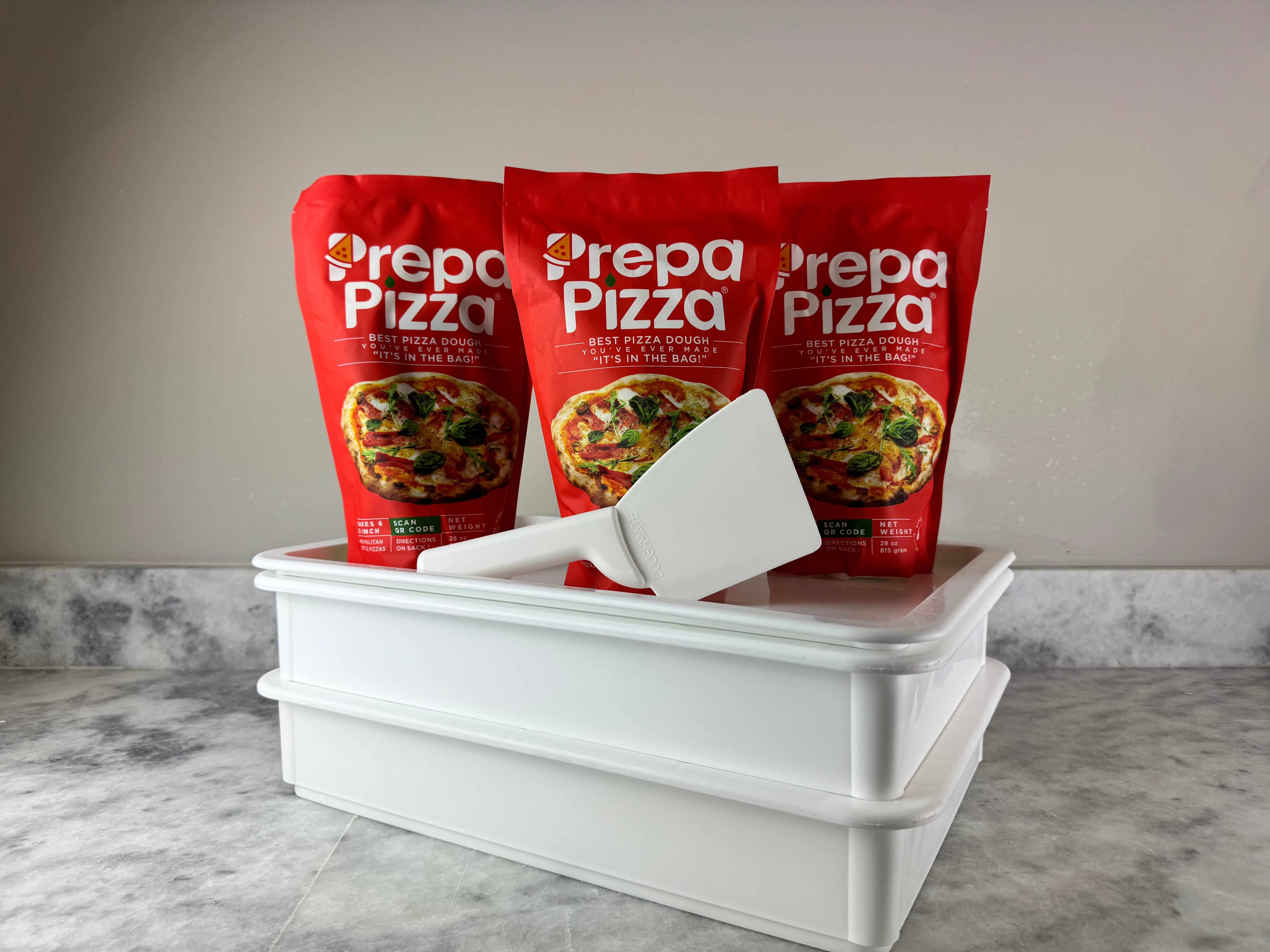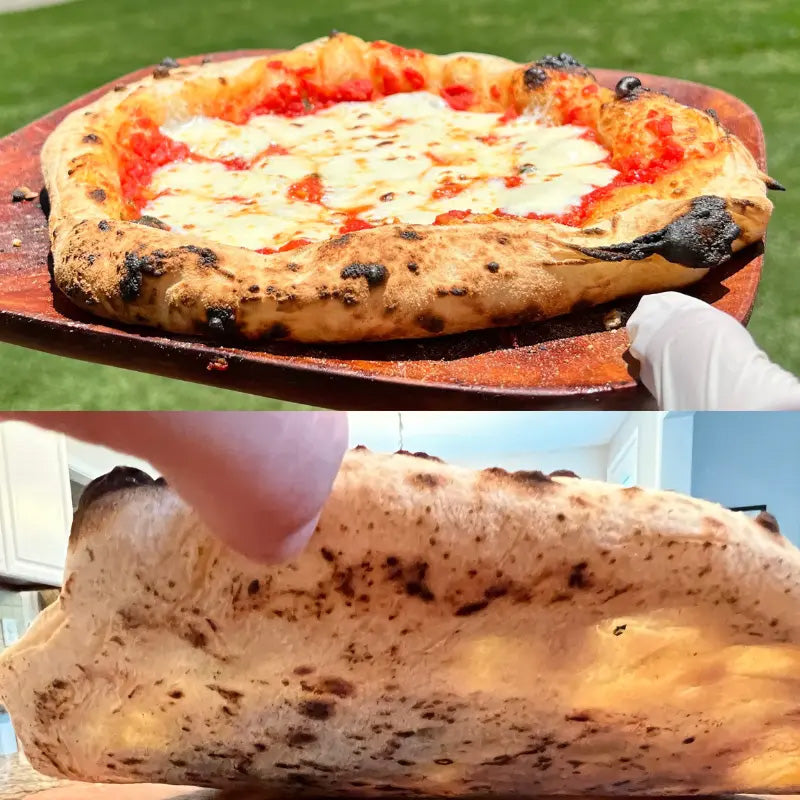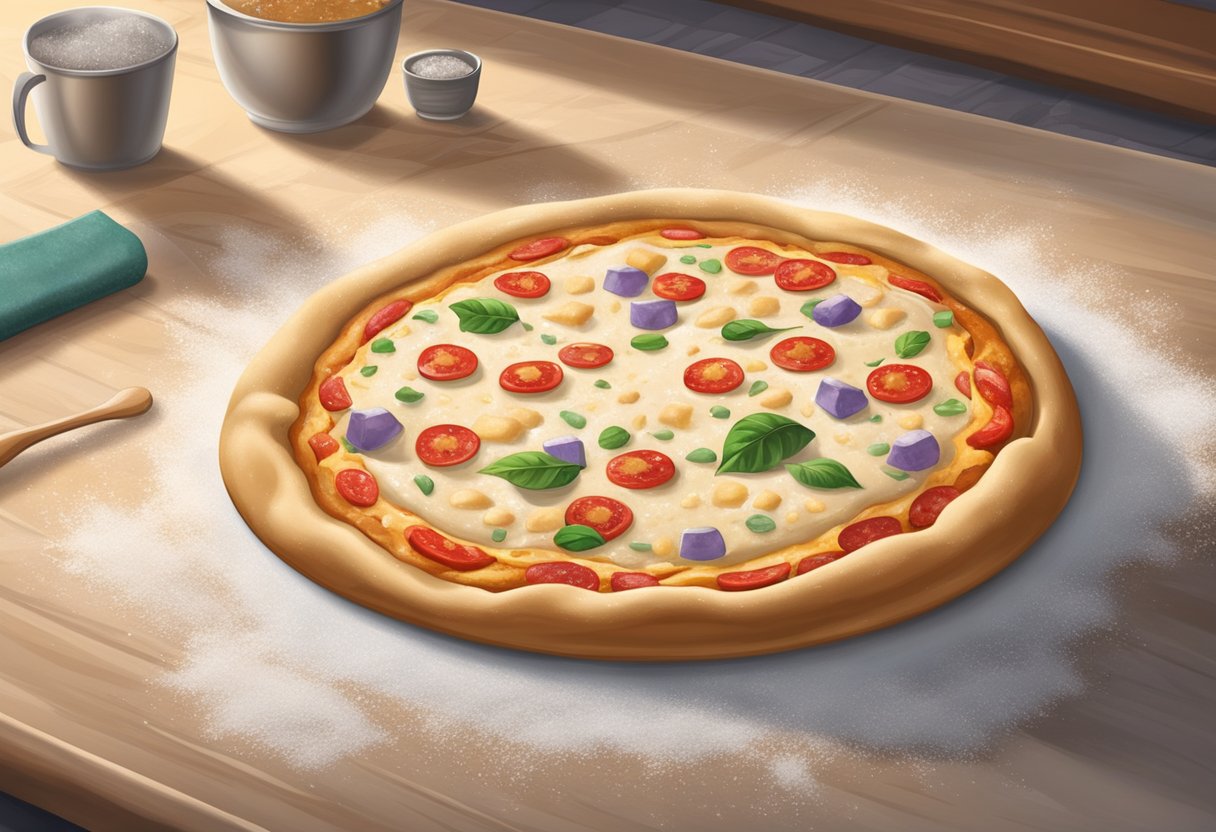
How Long Does Frozen Pizza Dough Take to Thaw for Best Results?
Thawing frozen pizza dough can be a crucial step in creating a delicious homemade pizza. To ensure your pizza turns out perfect, it's important to understand the best methods to defrost your dough. Typically, frozen pizza dough takes around 10 to 12 hours to thaw in the refrigerator, but if you're short on time, you can also defrost it at room temperature in about 2 hours.
Using these methods helps maintain the quality of the dough, ensuring it rises properly and provides a great texture when baked. Prepa Pizza’s frozen dough is designed to give you the best results, making it easier than ever to enjoy a restaurant-quality pizza at home. Whether you’re preparing for a family night or impressing guests, knowing how to thaw your dough properly sets the foundation for a fantastic meal.
Understanding Frozen Pizza Dough
Frozen pizza dough is a convenient way to prepare homemade pizza without the hassle of making dough from scratch. Knowing how it differs from other frozen dough products and the best ways to store it can enhance your pizza-making experience.
What Is Frozen Pizza Dough
Frozen pizza dough is specifically prepared dough that is shaped and frozen for easy use. It typically contains flour, water, yeast, and salt. When you buy frozen pizza dough, it's often designed to mimic the quality of fresh dough found in restaurants.
This dough can be thawed and rolled out to create various crust styles, whether thin, thick, or stuffed. When using a provider like Prepa Pizza, you benefit from a product made with quality ingredients. This ensures a superior rise and texture when baked.
How Frozen Pizza Dough Differs From Frozen Bread Dough
Frozen pizza dough differs from frozen bread dough in several key ways. First, pizza dough usually has a higher protein content due to the specific flour used, aiding gluten development. This results in a chewier crust that can hold toppings better.
In contrast, frozen bread dough is often richer in fats and sugars, which creates a different texture. It’s designed primarily for loaves and rolls and may require a different preparation method. Knowing these differences can help you choose the right dough for your cooking needs.
Storing Frozen Pizza Dough
Proper storage of frozen pizza dough is crucial for maintaining its quality. Always keep the dough in an airtight container or well-sealed plastic wrap to prevent freezer burn.
When stored under optimal conditions, your frozen pizza dough can last up to three months without significant loss in quality. For longer storage, consider vacuum sealing. When you’re ready to use it, thaw the dough in the refrigerator overnight or at room temperature for a quicker process. Using premium options like Prepa Pizza allows for a consistent and enjoyable cooking experience.
Thawing Methods and Times for Frozen Pizza Dough
Thawing frozen pizza dough can be straightforward if you choose the right method. Each approach has its advantages and specific time frames, ensuring your dough is ready for use when you need it.
Refrigerator Thawing: Best Practices
Thawing pizza dough in the refrigerator is the recommended method for maintaining quality. To do this, simply remove your frozen dough from the packaging and place it in a bowl. Cover it loosely with plastic wrap or a damp cloth to prevent drying.
Thawing Time: Plan for 10 to 12 hours. This gradual thawing process ensures the dough retains its texture and flavor.
Store the thawed dough in the refrigerator for no more than 24 hours before use. If using Prepa Pizza dough, you can trust that it will maintain its quality throughout this process, ensuring a delicious result.
Countertop Thawing: Speed Versus Safety
If you’re short on time, countertop thawing is a viable option. Simply place the frozen pizza dough on a floured surface and cover it with a damp cloth.
Thawing Time: This method typically takes around 2 hours. Keep an eye on the dough to ensure it doesn’t overproof, especially in warmer environments.
For best results, check the dough periodically. Prepa Pizza dough is designed to thaw quickly while preserving the quality, allowing you to prepare your pizza without sacrificing taste.
Quick Thawing Tips for Last-Minute Use
If you’re in a pinch, there are a couple of quick thawing tricks you can use. One method is to submerge the sealed pizza dough in warm water.
Quick Options:
- Warm Water Method: Place the dough in a bowl of warm (not hot) water for about 30 minutes.
- Microwave Method: Use the microwave's defrost setting for 15 minutes, checking frequently to prevent cooking the dough.
Both methods are effective for Prepa Pizza dough, providing flexibility when preparing your pizza recipe at the last minute. Just be cautious not to let the dough rise too much during the thawing process.
Factors Affecting Thawing Time
When thawing frozen pizza dough, several key elements influence the duration it takes for the dough to become ready for use. Understanding these factors can help you achieve the best results with your homemade pizza.
Dough Size and Thickness
The size and thickness of the pizza dough play a crucial role in thawing time. Thicker dough requires more time to defrost evenly compared to thinner options. For instance, a substantial dough ball may take up to 12 hours in the refrigerator, while a thinner portion could thaw in as little as two hours at room temperature.
You should also consider portion sizes. Smaller balls of dough will naturally thaw faster than larger ones. Your choice of dough size should align with the type of pizza you’re preparing. For example, if you’re planning a deep-dish pizza, opting for a thicker dough will necessitate longer thawing times.
Packaging and Storage Conditions
How you package and store your frozen pizza dough significantly affects thawing time. If the dough is tightly wrapped and sealed, it’ll maintain a better texture during defrosting. Loose packaging can lead to excess moisture loss, making the dough dry.
Storing your dough in a freezer at a consistent temperature is also important. Fluctuating temperatures can cause ice crystals to form, which changes the dough's structure and impacts its thawing efficiency. Using quality packaging, like what Prepa Pizza offers, ensures optimal preservation and a better thawing experience.
Preparing Thawed Pizza Dough for Baking
When preparing thawed pizza dough for baking, ensuring its readiness is crucial. This involves checking the dough's texture and elasticity, followed by shaping the dough into the desired pizza crust.
Checking Dough Readiness
Before using thawed pizza dough, it is essential to check its readiness. First, gently press your finger into the dough. If it springs back, it is ready for shaping. The dough should feel soft and pliable without being overly sticky. If it's sticky, dust it lightly with flour.
Additionally, let the dough rise for about 30 minutes at room temperature. This allows the yeast to activate, improving its texture. If you notice any cracks when stretching, cover the dough with a damp cloth and let it rest for another 10–15 minutes. This rest period will make it easier to roll out and shape.
Shaping the Pizza Base
To shape your pizza base, start by lightly flouring your work surface. Place the dough on the floured area and gently flatten it with your fingers. Gradually stretch it outwards, rotating the dough to maintain an even thickness. Aim for a thickness of about ¼ inch for a perfectly cooked pizza crust.
Use your hands to work the edges gently, creating a thicker outer rim for the crust. If you prefer a more rustic look, you can leave the edges uneven. Once shaped, let the dough rest for another 10 minutes before adding toppings. This additional time helps the crust maintain its shape during baking.
Baking and Topping Tips After Thawing
Thawing your frozen pizza dough is just the beginning of creating a delicious pizza. The right baking techniques and topping choices can significantly enhance your pizza experience. Here are essential tips to help you achieve the best results after thawing.
Ideal Ovens and Temperatures for Frozen Dough
When baking your pizza, the oven temperature plays a crucial role. Preheat your conventional oven to 475°F (245°C) for optimal results. This high temperature mimics a brick oven, giving your pizza a crispy crust.
If you’re using a toaster oven, you can achieve similar results. Make sure it’s preheated to the same temperature. Depending on the size, you may need to adjust baking time slightly, typically around 10 to 15 minutes.
Using a baking stone can enhance the crust’s texture. Place the stone in the oven while it preheats. This helps to evenly distribute heat and absorb moisture, resulting in a golden, crispy crust.
Best Pizza Toppings and Combinations
Choosing the right toppings elevates your pizza. Classic combinations like pepperoni and cheese are favorites, but feel free to experiment. Consider adding vegetables such as bell peppers, onions, or mushrooms for extra flavor and texture.
A mix of cheeses, such as mozzarella blended with provolone, can create a richer taste. For something different, try adding fresh basil or a drizzle of balsamic glaze after baking for a gourmet touch.
Remember to balance toppings carefully. Too many can make the pizza soggy, so aim for a hearty yet manageable amount.
Using a Baking Stone or Toaster Oven
Using a baking stone can significantly improve your results. Place it in the oven during preheating, and allow it to get hot. Once ready, launch your pizza directly onto the stone. This helps achieve a bottom crust that’s both crispy and well-cooked.
If using a toaster oven, ensure it has enough space for the pizza to sit without touching the walls. Use a tray if necessary to catch drips. Rotate the pizza halfway through the baking time to ensure even cooking.
Regardless of your choice of cooking method, keep an eye on the pizza. The perfect pizza is baked until the crust is golden and the cheese is bubbling. Enjoy the process of experimenting to find your ideal pizza combination!
Frequently Asked Questions
Thawing frozen pizza dough requires specific methods and timelines for optimal results. Here, you will find answers to common questions about thawing, including timeframes and techniques for defrosting effectively.
What is the standard time to thaw frozen pizza dough on the countertop?
Typically, thawing frozen pizza dough on the countertop takes about 1 to 2 hours. Make sure to keep the dough covered with a towel or in a bowl to prevent it from drying out.
What are the recommended steps to defrost frozen pizza dough rapidly?
For rapid defrosting, you can place the sealed dough in a bowl of cold water. This method usually takes approximately 30 minutes to thaw the dough.
Is it necessary to let frozen pizza dough rise after it has been thawed?
Yes, allowing the dough to rise after thawing is important. This process enhances the texture and ensures even cooking when you bake your pizza.
How much time is typically required to defrost pizza dough in the refrigerator?
Defrosting pizza dough in the refrigerator generally requires about 10 to 12 hours. This slow thawing method allows the dough to maintain its structure and rise properly.
Can you use a microwave to defrost pizza dough, and if so, how?
You can use a microwave to defrost pizza dough, but it requires caution. Set the microwave to the defrost setting and check the dough frequently to avoid cooking it. It usually takes about 1 to 2 minutes, depending on the microwave.
What are effective methods for quickly thawing frozen dough?
In addition to the water bath method, you can also leave the dough out at room temperature, allowing it to thaw and rise. This technique can be supplemented with intermittent kneading to speed up the process.




